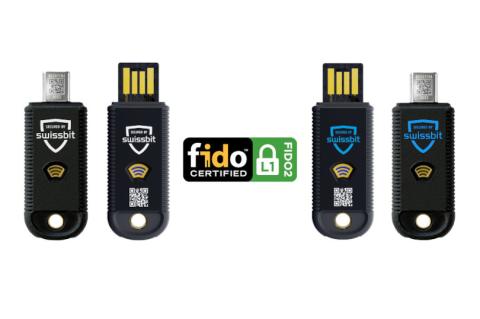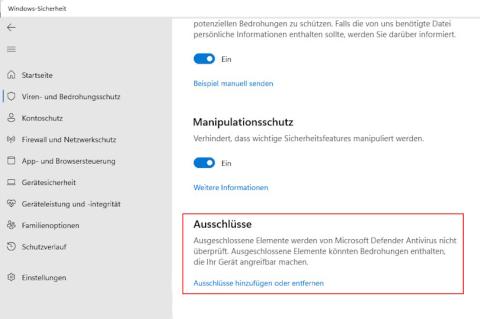Die M-Serie beschäftigt sich mit der Wartung von internationalen Übertragungssystemen, Telephon-, Telegraphie- und Standleitungen.
Introduction and general principles of maintenance and maintenance organization
M.10
Scope and application of Recommendations for maintenance of telecommunication networks and services
M.15
Maintenance considerations for new systems
M.20
Maintenance philosophy for telecommunications networks
M.21
Maintenance philosophy for telecommunication services
M.32
Principles for using alarm information for maintenance of international transmission systems and equipment
M.34
Performance monitoring on international transmission systems and equipment
M.35
Principles concerning line-up and maintenance limits
M.50
Use of telecommunication terms for maintenance
M.60
Maintenance terminology and definitions
M.70
Guiding principles on the general maintenance organization for telephone-type international circuits
M.75
Technical service
M.80
Control stations
M.85
Fault report points
M.90
Sub-control stations
M.100
Service circuits
M.110
Circuit testing
M.120
Access points for maintenance
M.125
Digital loopback mechanisms
M.160
Stability of transmission
International transmission systems
M.320
Numbering of the channels in a group
M.330
Numbering of groups within a supergroup
M.340
Numbering of supergroups within a mastergroup
M.350
Numbering of mastergroups within a supermastergroup
M.380
Numbering in coaxial systems
M.390
Numbering in systems on symmetric pair cable
M.400
Numbering in radio-relay links or open-wire line systems
M.410
Numbering of digital blocks in transmission systems
M.450
Bringing a new international transmission system into service
M.460
Bringing international group, supergroup, etc., links into service
M.470
Setting up and lining up analogue channels for international telecommunication services
M.475
Setting up and lining up mixed analogue/digital channels for international telecommunication services
M.495
Transmission restoration and transmission route diversity: Terminology and general principles
M.496
Functional organization for automatic transmission restoration
M.500
Routine maintenance measurements to be made on regulated line sections
M.510
Readjustment to the nominal value of a regulated line section (on a symmetric pair line, a coaxial line or a radio-relay link)
M.520
Routine maintenance on international group, supergroup, etc., links
M.525
Automatic maintenance procedures for international group, supergroup, etc., links
M.530
Readjustment to the nominal value of an international group, supergroup, etc., link
M.535
Special maintenance procedures for multiple destination, unidirectional (MU) group and supergroup links
M.540
Routine maintenance of carrier and pilot generating equipment
M.556
Setting up and initial testing of digital channels on an international digital path or block
International telephone circuits
M.560
International telephone circuits - Principles, definitions and relative transmission levels
M.562
Types of circuit and circuit section
M.565
Access points for international telephone circuits
M.570
Constitution of the circuit; preliminary exchange of information
M.580
Setting up and lining up an international circuit for public telephony
M.585
Bringing an international digital circuit into service
M.590
Setting up and lining up a circuit fitted with a compandor
M.600
Organization of routine maintenance measurements on circuits
M.605
Routine maintenance schedule for international public telephony circuits
M.610
Periodicity of maintenance measurements on circuits
M.620
Methods for carrying out routine measurements on circuits
M.630
Maintenance of circuits using control chart methods
M.650
Routine line measurements to be made on the line repeaters of audio-frequency sections or circuits
M.660
Periodical in-station tests of echo suppressors complying with Recommendations G.161 and G.164
M.665
Testing of echo cancellers
M.670
Maintenance of a circuit fitted with a compandor
M.675
Lining up and maintaining international demand assignment circuits (SPADE)
M.710
General maintenance organization for the international automatic and semi-automatic telephone service
M.715
Fault report point (circuit)
M.716
Fault report point (network)
M.717
Testing point (transmission)
M.718
Testing point (line signalling)
M.719
Testing point (switching and interregister signalling)
M.720
Network analysis point
M.721
System availability information point
M.722
Network management point
M.723
Circuit control station
M.724
Circuit sub-control station
M.725
Restoration control point
M.726
Maintenance organization for the wholly digital international automatic and semi-automatic telephone service
M.729
Organization of the maintenance of international public switched telephone circuits used for data transmission
M.730
Maintenance methods
M.731
Subjective testing
M.732
Signalling and switching routine maintenance tests and measurements
M.733
Transmission routine maintenance measurements on automatic and semi-automatic telephone circuits
M.734
Exchange of information on incoming test facilities at international switching centres
Common channel signalling systems
M.760
Transfer link for common channel Signalling System N▌ 6
M.762
Maintenance of common channel Signalling System N▌ 6
International telegraph systems and phototelegraph transmission
M.800
Use of circuits for voice-frequency telegraphy
M.810
Setting up and lining up an international voice-frequency telegraph link for public telegraph circuits (for 50, 100 and 200 baud modulation rates)
M.820
Periodicity of routine tests on international voice-frequency telegraph links
M.830
Routine measurements to be made on international voice-frequency telegraph links
M.850
International time division multiplex (TDM) telegraph systems
M.880
International phototelegraph transmission
International leased group and supergroup links
M.900
Use of leased group and supergroup links for wide-spectrum signal transmission (data, facsimile, etc.)
M.910
Setting up and lining up an international leased group link for wide-spectrum signal transmission
International leased circuits
M.1010
Constitution and nomenclature of international leased circuits
M.1012
Circuit control station for leased and special circuits
M.1013
Sub-control station for leased and special circuits
M.1014
Transmission maintenance point (international line) (TMP-IL)
M.1015
Types of transmission on leased circuits
M.1016
Assessment of the service availability performance of international leased circuits
M.1020
Characteristics of special quality international leased circuits with special bandwidth conditioning
M.1025
Characteristics of special quality international leased circuits with basic bandwidth conditioning
M.1030
Characteristics of ordinary quality international leased circuits forming part of private switched telephone networks
M.1040
Characteristics of ordinary quality international leased circuits
M.1045
Preliminary exchange of information for the provision of international leased circuits and international data transmission systems
M.1050
Lining up an international point-to-point leased circuit
M.1055
Lining up an international multiterminal leased circuit
M.1060
Maintenance of international leased circuits
Mobile telecommunication systems and services
M.1130
General definitions and general principles of operation/maintenance procedures to be used in satellite mobile systems
M.1140
Maritime mobile telecommunication services via satellite Replaces M.1100+M.1110+M.1120
M.1150
Maritime mobile telecommunication store-and-forward services (packet mode) via satellite
M.1160
Aeronautical mobile telecommunication service via satellite
International public telephone network
M.1230
Method to improve the management of operations and maintenance processes in the international telephone network
M.1235
Use of automatically generated test calls for assessment of network performance
International data transmission systems
M.1300
International data transmission systems operating in the range 2.4 kbit/s to 2048 kbit/s
M.1320
Numbering of channels in data transmission systems
M.1340
Performance allocations and limits for international data transmission links and systems
M.1350
Setting up, lining up and characteristics of international data transmission systems operating in the range 2.4 kbit/s to 14.4 kbit/s
M.1355
Maintenance of international data transmission systems operating in the range 2.4 to 14.4 kbit/s
M.1370
Bringing-into-service of international data transmission systems
M.1375
Maintenance of international data transmission systems
M.1380
bringing-into-service of international leased circuits that are supported by international data transmission systems
M.1385
Maintenance of international leased circuits that are supported by international data transmission systems
Designations and information exchange
M.1400
Designations for international networks
M.1510
Exchange of contact point information for the maintenance of international services and the international network
M.1520
Standardized information exchange between Administrations
M.1530
Network maintenance information
M.1535
Principles for maintenance information to be exchanged at customer contact point
M.1540
Exchange of information for planned outages of transmission systems
M.1550
Escalation procedure
M.1560
Escalation procedure for international leased circuits
International transport network
M.2100
Performance limits for bringing-into-service and maintenance of international PDH paths, sections and transmission systems
M.2101.1
Performance limits for bringing-into-service and maintenance of international SDH paths and multiplex sections
In spite of the fact that ITU-T M.2101.1 and M.2101 are similar, they are both in force. M.2101.1 will eventually be deleted after PDH items have been transferred from M.2101.1 to M.2101.
M.2102
Maintenance thresholds and procedures for recovery mechanisms (protection and restoration) of international SDH VC trails (paths) and multiplex sections
M.2110
Bringing into service international digital paths, sections and transmission systems
M.2120
Digital path, section and transmission system fault detection and localization procedures
M.2130
Operational procedures in locating and clearing transmission faults
M.2140
Transport network event correlation
M.2201
Performance objectives, allocations and limits for bringing-into-service and maintenance of international ATM virtual path and virtual channel connections
M.2301
Performance objectives and procedures for provisioning and maintenance of IP-based networks
Telecommunications management network
M.3000
Overview of TMN Recommendations
M.3010
Principles for a telecommunications management network
M.3013
Considerations for a telecommunications management network
M.3016
TMN security overview
Renumbered as M.3016.0 when revised on 2005-05-22
M.3016.0
Security for the management plane: Overview
Formerly ITU-T M.3016
M.3016.1
Security for the management plane: Security requirements
M.3016.2
Security for the management plane: Security services
M.3016.3
Security for the management plane: Security mechanism
M.3016.4
Security for the management plane: Profile proforma
M.3017
Framework for the integrated management of hybrid circuit/packet networks
M.3020
TMN interface specification methodology
M.3030
Telecommunications Markup Language (tML) framework
M.3031
Guidelines for Implementation Conformance Statement proformas for tML schemas
M.3050.0
Enhanced Telecommunications Operations Map - Introduction
M.3050.1
Enhanced Telecommunications Operations Map - The business process framework
M.3050.2
Enhanced Telecommunications Operations Map - Process decompositions and descriptions
M.3050.3
Enhanced Telecom Operations Map (eTOM) - Representative process flows
M.3050.4
Enhanced Telecom Operations Map (eTOM) - B2B integration: Using B2B inter-enterprise integration with the eTOM
M.3050
Enhanced Telecommunications Operations Map (eTOM) - Supplements
M.3060
Principles for the Management of the Next Generation Networks
M.3100
Generic network information model
M.3101
Managed object conformance statements for the generic network information model
M.3108.1
Information model for management of leased circuit and reconfigurable services
M.3108.2
TMN management services for dedicated and reconfigurable circuits network: Information model for connection management of preprovisioned service link connections to form a reconfigurable leased service
M.3108.3
TMN management services for dedicated and reconfigurable circuits network: Information model for management of virtual private network service
M.3120
CORBA generic network and network element level information model
M.3180
Catalogue of TMN management information
M.3200
TMN management services: overview
M.3207.1
TMN management service: Maintenance aspects of B-ISDN management
M.3208.1
TMN management services for dedicated and reconfigurable circuits network : Leased circuit services
M.3208.2
TMN management services for dedicated and reconfigurable circuits network : Connection management of pre-provisioned service link connections to form a leased circuit service
M.3208.3
TMN management services for dedicated and reconfigurable circuits network: Virtual private network
M.3210.1
TMN management services for IMT-2000 security management
M.3211.1
TMN management service: Fault and performance management of the ISDN access
M.3300
TMN management capabilities presented at the F interface
M.3341
Requirements for QoS/SLA management over the TMN X-interface for IP-based services
M.3342
Guidelines for the definition of SLA representation template
M.3350
TMN service management requirements for information interchange across the TMN X-interface to support provisioning of Emergency Telecommunication Service (ETS)
M.3400
TMN management functions
Integrated services digital networks
M.3600
Principles for the management of ISDNs
M.3602
Application of maintenance principles to ISDN subscriber installations
M.3603
Application of maintenance principles to ISDN basic rate access
M.3604
Application of maintenance principles to ISDN primary rate access
M.3605
Application of maintenance principles to static multiplexed ISDN basic rate access
M.3610
Principles for applying the TMN concept to the management of B-ISDN
M.3611
Test management of the B-ISDN ATM layer using the TMN
M.3620
Principles for the use of ISDN test calls, systems and responders
M.3621
Integrated management of the ISDN customer access
M.3640
Management of the D-channel - Data link layer and network layer
M.3641
Management information model for the management of the data link and network layer of the ISDN D-channel
M.3650
Network performance measurements of ISDN calls
M.3660
ISDN interface management services
Common channel signalling systems
M.4010
Inter-Administration agreements on common channel Signalling System No. 6
M.4030
Transmission characteristics for setting up and lining up a transfer link for common channel Signalling System No. 6 (analogue version)
M.4100
Maintenance of common channel Signalling System No. 7
M.4110
Inter-Administration agreements on common channel Signalling System No. 7


